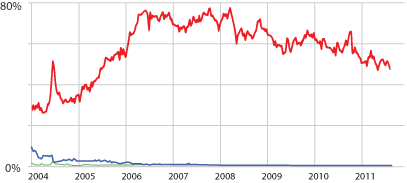
Gmail fans often cite great spam protection as a key reason as to why they love Gmail. It's relatively easy to catch spam messages; the challenge is to catch the right messages without blocking mail that you want along the way.
How do we do it? Our team of leading spam-fighting scientists uses a number of advanced Google technologies. Though in many cases our best weapon is you.
Gmail users play an important role in keeping spammy messages out of millions of inboxes. When the Gmail community votes with their clicks to report a particular email as spam, our system quickly learns to start blocking similar messages. The more spam the community marks, the smarter our system becomes.
The same advanced computing infrastructure that powers Google search also tunes our spam filters. As new spam data is released, the scale of Google's computer network allows us to quickly modify Gmail's spam-fighting algorithms. It's often a matter of minutes between the time a spammer sends out a new type of junk mail and when it's blocked from Gmail accounts.
Many Google teams provide pieces of the spam-protection puzzle, from distributed computing to language detection. For example, we use optical character recognition (OCR) developed by the Google Book Search team to protect Gmail users from image spam. And machine-learning algorithms developed to merge and rank large sets of Google search results allow us to combine hundreds of factors to classify spam.
Many webmail services support a single authentication system to verify senders and help identify forged messages. Gmail supports multiple authentication systems, including SPF (Sender Policy Framework), DomainKeys and DKIM (DomainKeys Identified Mail), so we can be more certain that your mail is from who it says it's from. Also, unlike many other providers that automatically let through all mail from certain senders, making it possible for their messages to bypass spam filters, Gmail puts all senders through the same rigorous checks.
While we think that you should never have to look in your spam folder, we know that some of you may want to know why the messages there were marked as spam. Gmail shows you a brief explanation at the top of each of your spam messages. Simply look at any message in your spam folder and now you can find out why it was put there and learn about any potentially harmful content within the message.